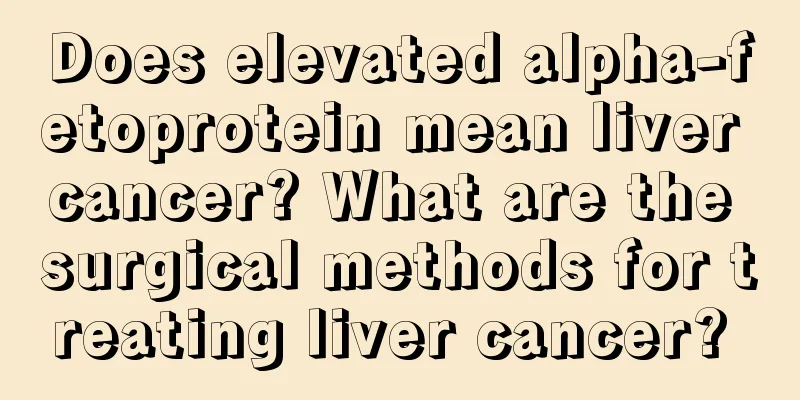How is rapidly progressive glomerulonephritis treated?

|
Rapidly progressive glomerulonephritis is currently a relatively common disease, which can cause problems with the patient's kidneys. It often occurs in adolescents, and middle-aged people and children also account for a small proportion. It can cause patients to develop nephritis due to streptococcal infection, causing renal failure, renal edema, small urine volume, hematuria, high blood pressure, increased protein, and rapid formation of uremia. Patients with uremia may have symptoms all over the body, so they often feel physical fatigue, mental atrophy, and weight loss. Severe cases may be accompanied by fever, abdominal pain, and skin rash, which can cause systemic damage. Usually, medication treatment is needed, and reasonable methods of adjustment are used. Acute symptoms need to be controlled with medication as soon as possible, and surgical treatment can be used if necessary. Symptoms and signs This disease is a rare disease, accounting for about 2% of renal biopsy cases. The peak age of onset is young people and middle-aged and elderly people. If RPGN occurs in children, it is mostly post-streptococcal nephritis. Patients often have symptoms of upper respiratory tract infection before the onset of the disease, and some patients have a history of exposure to organic solvents, myocardial infarction or tumor. The disease is common in spring and summer. In most cases, the disease develops insidiously with an acute onset. The clinical manifestations are rapidly progressive nephritic syndrome. Some patients present with symptoms of nephrotic syndrome, such as edema, oliguria, hematuria, anuria, proteinuria, hypertension, etc., and rapidly progress to uremia. The development speed is as fast as a few hours, and generally takes several weeks to several months. Patients have severe systemic symptoms, such as fatigue, listlessness, weight loss, which may be accompanied by fever, abdominal pain, rash, etc. Secondary to other systemic diseases such as systemic lupus erythematosus, it may have manifestations of the primary disease. Medication The disease has an acute onset, rapid progression and deterioration, and has a very high mortality rate. The principles are early diagnosis, adequate treatment, and targeted combined treatment. Acute and chronic glomerular injury should be treated differently. The formation of a large number of crescents and fibrinoid necrosis indicate that the lesion is in the active stage and should be treated actively. Fibrotic crescents and renal interstitial fibrosis indicate that the lesion has entered the chronic stage and attention should be paid to protecting renal function. If accompanied by systemic symptoms, cyclophosphamide and methylprednisolone should be used to control the symptoms as soon as possible. 1. Acute treatment The key to acute phase treatment is early diagnosis and timely implementation of enhanced inhibitory measures against immune responses and inflammatory processes, which can effectively control disease progression and reduce mortality. It was reported that 73% of 339 patients with rapidly progressive nephritis died or had renal death (survival dependent on dialysis) before treatment with immune-inflammatory inhibitors. The 5-year survival rate after treatment (independent of dialysis) reached 60% to 80%. Among a group of 42 cases, 32 cases (76%) showed improvement after treatment, indicating that modern treatment measures are effective. Specific treatment methods are as follows: (1) Shock therapy: ① Corticosteroids and immunosuppressive drugs: In addition to conventional treatment with steroid hormones and cytotoxic drugs, methylprednisolone pulse therapy is used, that is, methylprednisolone 1g or (15-30mg/kg) is dissolved in 150-250ml of 5% glucose solution and intravenously dripped within 1-2 hours, once a day, 3 times as a course of treatment, and repeated 1-2 courses after an interval of 3-4 days. During and after treatment, prednisone (prednisone) 1-2mg/(kg·d) is used as maintenance treatment every other day. This therapy should be used when the blood creatinine is lower than 707μmol/L (8mg/dl), otherwise it will affect the efficacy if it is started too late. Methylprednisolone pulse therapy is more effective than simple oral prednisone (cordnisone) and cytotoxic drugs, especially for types II and III. 70% of patients can be separated from dialysis and maintain normal renal function for more than two years. However, it is not effective for type I. Combined use of high-dose cyclophosphamide (CTX) pulse therapy can enhance the therapeutic effect, improve renal function, reduce urine protein and the number of cellular crescents. The dosage of cyclophosphamide (CTX) is 0.5-1g/m2 of body surface area, once a month, for a total of 6-12 times. Methylprednisolone 500-1000 mg/d for 3 days, followed by oral prednisone 60-100 mg/d. After 3 months, the dosage is gradually reduced to 30 mg/d and then gradually withdrawn. ② Plasma exchange therapy: This therapy is to release a large amount of anticoagulated whole blood from the patient, separate the plasma and blood cells by centrifugation or large-pore fiber membrane ultrafiltration, and remove the plasma, 2 to 4L each time, once a day or every other day, and then supplement with an equal amount of healthy fresh plasma or other substitutes. This method can remove circulating antigens, antibodies, immune complexes and inflammatory mediators, enhance the phagocytic function of the reticuloendothelial system, improve the stability of the body's internal environment, and facilitate recovery from the disease. Plasma exchange therapy has a better effect on type I disease, especially in the early stages of type I disease. If treatment is started before the disease develops to oliguria and renal failure and before blood creatinine is <530μmol/L (6mg/dl), circulating antibodies can disappear within 1 to 2 weeks, and most conditions can be improved. When using this therapy, steroid hormones and cytotoxic drugs must be used simultaneously to prevent recurrence of the disease. Commonly used drugs are prednisone (prednisone) 60mg/d, ( Diet and health care Pay attention to rest, avoid fatigue, prevent infection, eat a low-protein diet, and pay attention to vitamin supplements. Avoid taking medications that damage the kidneys. Preventive Care 1. Pay attention to rest, avoid fatigue, prevent infection, eat a low-protein diet, and pay attention to vitamin supplements. Avoid taking medications that damage the kidneys. 2. During the drug treatment period, follow-up visits should be conducted every 1 to 2 weeks to observe urine routine, liver and kidney function, and growth and development to guide the completion of the treatment. 3. After active lesions are controlled and the treatment course is completed, renal biopsy should be repeated to evaluate the pathological changes in renal tissue and observe whether there is a tendency towards chronicity so that timely measures can be taken. |
<<: Is yellowing of the whites of the eyes jaundice? Why does jaundice occur
>>: What are the methods to treat blackheads
Recommend
The latest progress in cellular immunotherapy for nasopharyngeal carcinoma
Recent progress in cellular immunotherapy for nas...
Can I still dance if my knees hurt?
In life, after we finish a busy day's work, w...
Can glioma be passed down to children?
It is extremely distressing to have a disease, es...
How to prevent lung cancer in the early stage? Remember five points and lung cancer will never come again
Experts say that as environmental pollution becom...
How to treat weak kidney pulse
Kidney Yin deficiency is a type of kidney deficie...
How to detect endometrial cancer
In our clinical medicine, each disease has its re...
Eye congestion when wearing contact lenses, these methods can relieve it
Many people with myopia usually wear contact lens...
Is bone marrow edema serious?
Bone marrow edema is a common disease syndrome in...
What are the benefits of drinking wine before bed?
Nowadays, people are more and more particular abo...
The downside of being angry
Many of us probably have a bad temper at ordinary...
What is the use of medicinal pearl powder
Nowadays, many people pay special attention to ta...
What are the famous snacks in the country
Food is the most important thing for people. Peop...
Itchy skin all over the body
The skin is very sensitive, and a small stimulati...
Is it possible to have a natural birth six years after a caesarean section?
When a woman is giving birth, there are many fact...
Sequelae of cervical cancer chemotherapy and radiotherapy?
After radiotherapy and chemotherapy for cervical ...









